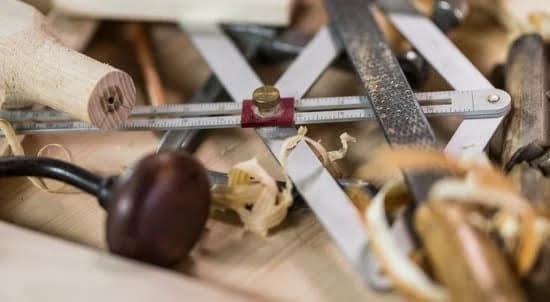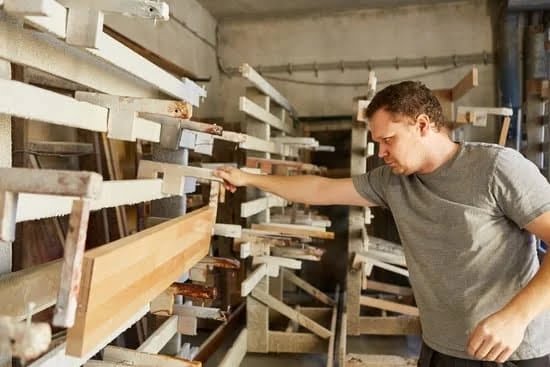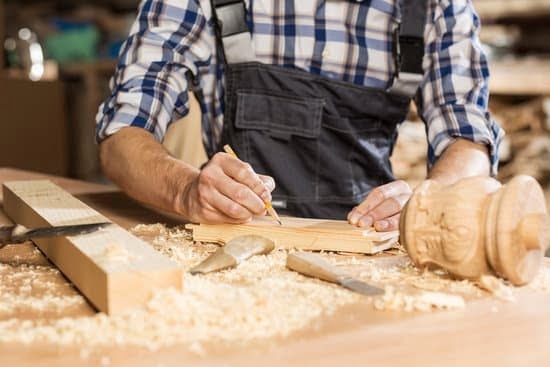Woodworking power tools are essential for any woodworking enthusiast or professional. In this article, we will explore the basics of using these powerful tools and why they are crucial in a workshop setting. Whether you’re a beginner or an experienced woodworker, understanding how to use woodworking power tools is vital for creating high-quality and precise woodwork.
Before delving into the intricacies of using these tools, it’s important to prioritize safety. We will discuss the essential safety precautions and gear necessary to ensure a safe woodworking environment when utilizing power tools. Additionally, we’ll provide a detailed guide on the different types of woodworking power tools and their functions, allowing you to choose the right tool for your specific woodworking needs.
Once you have a solid understanding of safety measures and the different types of power tools available, we will delve into tips on setting up your workspace. Proper organization and maintenance of a clutter-free environment are key factors in utilizing woodworking power tools effectively.
Moreover, we’ll provide step-by-step instructions on how to use these tools for common tasks such as cutting, drilling, and shaping wood, as well as explore more advanced techniques for intricate woodwork and design.
Finally, we’ll cover how to maintain and care for your woodworking power tools to ensure their longevity and efficiency, as well as address common issues and solutions when using these powerful instruments. With this comprehensive guide, you’ll be well-equipped to harness the full potential of woodworking power tools while prioritizing safety and efficiency in your woodworking projects.
Safety First
Woodworking power tools are essential for any woodworking project, but it is crucial to prioritize safety when using them. Before you start working with woodworking power tools, there are several key safety precautions and pieces of gear that you need to consider for your own well-being and the overall success of your project. Here are some important safety measures to keep in mind:
- Wear appropriate safety gear: When using woodworking power tools, it is important to wear the right safety gear to protect yourself from potential hazards. This includes wearing safety goggles to shield your eyes from flying debris, ear protection to reduce noise levels, a dust mask to avoid inhaling sawdust particles, and non-slip footwear for stability.
- Understand the tool’s capabilities: Each woodworking power tool has its own unique capabilities and limitations. Before using any tool, make sure you fully understand how it operates and what it can do. Read the user manual thoroughly and familiarize yourself with the specific features of each tool.
- Keep your workspace well-lit and organized: A clutter-free environment is essential for safe woodworking. Make sure your workspace is well-lit so that you can see what you are doing clearly. Keep all tools and materials organized and within easy reach to prevent accidents caused by reaching or stumbling over objects.
In addition to these measures, always follow the manufacturer’s instructions for each woodworking power tool, inspect your tools before use for any damage or defects, and never operate a tool if you are tired or under the influence of alcohol or drugs. By prioritizing safety and taking these precautions seriously, you can ensure a safe and successful woodworking experience when using power tools.
Essential Woodworking Power Tools
Woodworking power tools are essential for any woodworking project, whether you are a novice or an experienced woodworker. They not only make the tasks easier and more efficient but also open up possibilities for more complex and intricate designs. Understanding the different types of woodworking power tools and their functions is crucial for anyone looking to delve into this craft.
Below is a detailed guide on the various types of woodworking power tools and their functions:
1. Power Drill: A power drill is a versatile tool that can be used for drilling holes, driving screws, or mixing paint. It can also be equipped with various attachments such as sanding discs, wire brushes, and more.
2. Circular Saw: This handheld saw is perfect for making straight cuts on lumber or plywood. It is portable and easy to use, making it an essential tool for any woodworker.
3. Router: Routers are used to hollow out an area in a piece of wood, creating decorative edges or joints. They come in both hand-held and table-mounted variations.
4. Jigsaw: A jigsaw is ideal for cutting curves in wood, making it a must-have tool for intricate woodworking projects.
5. Table Saw: This stationary saw is designed for making precision cuts on larger pieces of wood. It consists of a circular blade that protrudes through the surface of the table, allowing users to make accurate cuts with ease.
6. Random Orbital Sander: After cutting and shaping your wood, a random orbital sander is used to achieve smooth and uniform surfaces on your projects.
Understanding how to use woodworking power tools safely is just as important as knowing their functions. By familiarizing yourself with each tool’s purpose and usage guidelines, you can ensure safe and successful woodworking endeavors while minimizing the risk of accidents or injuries within your workshop.
Setting Up Your Workspace
When it comes to using woodworking power tools, setting up your workspace is crucial to ensure safety and efficiency. The first step in setting up your workspace is to designate a specific area for woodworking activities. This area should be well-ventilated and well-lit, with enough space to maneuver large pieces of wood and operate power tools without any obstructions. It’s also essential to keep the workspace organized and free from clutter to avoid accidents and distractions.
Once you have designated your workspace, the next step is to organize your tools and materials. Invest in sturdy shelving and storage containers to keep your woodworking power tools, accessories, and supplies neatly arranged and easily accessible. Labeling storage bins can also help in quickly finding the right tool for the job. Additionally, consider installing dust collection systems or ventilation devices to maintain air quality and protect yourself from sawdust and fumes generated during woodworking.
In addition to setting up your physical workspace, it’s important to establish good habits for maintaining a clutter-free environment. Clean up debris, shavings, and sawdust regularly, as these can create slip hazards or compromise the performance of your power tools if left unattended. Keeping a tidy workspace not only promotes safety but also makes it easier for you to focus on the task at hand without any unnecessary distractions.
| Woodworking Power Tool | Function |
|---|---|
| Table Saw | Mainly used for cutting large pieces of wood with accuracy. |
| Router | Used for shaping edges of wood or creating joinery. |
| Band Saw | Ideal for cutting irregular shapes into wood. |
Basic Techniques
Woodworking power tools are essential for completing common woodworking tasks such as cutting, drilling, and shaping. Whether you are a beginner or an experienced woodworker, it is important to understand the proper techniques for using these power tools to ensure safety and precision in your work.
Cutting With Woodworking Power Tools
When it comes to cutting wood, power tools such as a circular saw or jigsaw are often used. Before using these tools, it is important to measure and mark the wood accurately to ensure precise cuts. Always wear safety goggles and ear protection when operating power tools for cutting, and be sure to follow the manufacturer’s instructions for blade installation and usage.
Drilling Techniques
For drilling holes in wood, a power drill is the go-to tool. To achieve clean and accurate holes, use the appropriate drill bit size for your project. Secure the wood properly before drilling to avoid any movement or splintering. Additionally, always ensure that the drill bit is sharp and replace it if necessary to prevent any unnecessary strain on the tool.
Shaping Wood With Power Tools
To shape wood in woodworking projects, power tools such as a router or sander can be used. When using a router, it is important to move the tool in the correct direction and at a consistent speed to achieve smooth edges and finishes. When sanding, start with a coarse grit sandpaper and gradually move to finer grits for a polished surface. Always maintain control of the sander to avoid over-sanding or uneven surfaces.
By understanding these basic techniques for using woodworking power tools, you can efficiently complete common woodworking tasks with precision and safety in mind. Whether you are cutting, drilling, or shaping wood, following proper techniques will result in high-quality craftsmanship while minimizing any risks associated with using power tools.
Advanced Techniques
Creating Intricate Designs
When it comes to advanced woodworking techniques, using power tools for intricate designs can elevate your projects to a whole new level. Tools such as routers and jigsaws are essential for creating detailed patterns and ornate carvings in wood. Understanding how to use these tools effectively, including adjusting speed settings and blade types, is key to achieving precision in your woodworking designs.
Joinery Methods
Creating strong and seamless joints is a crucial aspect of woodworking, especially for more complex projects. Power tools such as biscuit joiners, dovetail jigs, and mortise and tenon machines offer efficient ways to achieve precise joinery. Learning how to use these tools effectively will allow you to create professional-looking furniture and other woodworking pieces with sturdy and durable constructions.
Working With Multiple Materials
While wood is the primary material used in most woodworking projects, incorporating other materials like metal or plastic can add unique elements to your designs. Advanced woodworking power tools such as multitool oscillating saws and rotary tools equipped with various attachments enable woodworkers to work with multiple materials seamlessly. Understanding how to use these versatile tools for different materials opens up endless possibilities for creativity in woodworking projects.
By learning advanced techniques for using woodworking power tools, woodworkers can expand their skills and take on more intricate and challenging projects. However, it’s important to always prioritize safety and proper maintenance of the tools in order to ensure both efficiency and longevity. Aspiring woodworkers can benefit from seeking guidance from experienced professionals or taking specialized classes that focus on advanced woodworking techniques using power tools.
Maintenance and Care
Woodworking power tools are essential for any woodworker, and proper maintenance and care are crucial to ensure their longevity and efficiency. Without regular maintenance, these tools can become less effective, potentially leading to accidents or malfunctions. In this section, we will explore the importance of maintaining and caring for woodworking power tools and provide a guide on how to do so effectively.
One of the first steps in maintaining woodworking power tools is to keep them clean and free from dust or debris. Regularly remove sawdust, shavings, and other particles from the tool’s surfaces, moving parts, and air vents. This not only improves the tool’s performance but also prevents overheating and potential damage caused by clogging.
In addition to keeping the tools clean, it is important to regularly inspect them for any signs of wear or damage. Check the blades, bits, belts, cords, and other components for any signs of wear or deterioration. Replace any damaged or worn-out parts immediately to prevent further damage and safety hazards.
Additionally, lubricate moving parts as recommended by the manufacturer to ensure smooth operation. Following these maintenance practices will help extend the life of your woodworking power tools and keep them operating at their best. Proper storage in a dry environment away from moisture and extreme temperatures is also essential in preserving their condition over time.
Overall, understanding how to use woodworking power tools goes hand-in-hand with knowing how to maintain and care for them properly. By incorporating these maintenance practices into your routine, you can ensure that your woodworking power tools remain reliable and efficient for years to come.
Troubleshooting
Woodworking power tools are essential for anyone looking to embark on woodworking projects. However, it is crucial to be prepared for potential issues that may arise when using these tools. In this section, we will discuss common problems that woodworkers may encounter when using power tools and provide solutions on how to handle tool malfunctions and accidents.
One of the most common issues when using woodworking power tools is kickback, which occurs when the saw blade catches on the workpiece and aggressively propels it back towards the operator. To prevent kickback, always ensure that your workpiece is held firmly in place and use a riving knife or splitter to prevent the material from pinching the blade.
Another issue that woodworkers may face is overheating of power tools. This can happen when the tool is used continuously for an extended period without giving it a chance to cool down. To avoid this, take regular breaks during use, especially when working on demanding tasks such as cutting thicker or harder woods.
In the event of a tool malfunction or accident, it is essential to know how to handle the situation safely. Always disconnect the power source immediately if you encounter any issues with your woodworking power tools. For accidents involving injury or damage to the tool, seek medical attention if necessary and consult the manufacturer’s instructions for troubleshooting guidance.
| Common Issue | Solution |
|---|---|
| Kickback | Use a riving knife or splitter; ensure workpiece is held firmly in place |
| Overheating | Take regular breaks during extended use; allow tool to cool down |
| Tool Malfunction/Accident | Disconnect power source; seek medical attention if necessary; consult manufacturer’s instructions for troubleshooting guidance |
Learning how to troubleshoot common issues and safely handle tool malfunctions and accidents is an important part of using woodworking power tools. By being aware of potential problems and knowing how to address them, woodworkers can ensure a safe and efficient working environment while using these powerful tools.
Conclusion
In conclusion, learning how to use woodworking power tools safely and effectively is crucial for anyone looking to pursue woodworking as a hobby or profession. The proper understanding of the basics, safety precautions, essential tools, workspace setup, and maintenance is key in ensuring not only the quality of work but also the safety of the woodworker.
By following the guidelines outlined in this article, individuals can gain confidence in using woodworking power tools and explore their creativity in crafting beautiful wood pieces.
It is important to always prioritize safety when working with woodworking power tools. This means wearing the necessary protective gear, keeping the workspace organized and clutter-free, and being mindful of one’s surroundings at all times. Additionally, knowing how to properly maintain and care for woodworking power tools will not only extend their lifespan but also ensure that they function efficiently during use.
Whether one is just starting out or has been woodworking for years, there are always new techniques and tips to learn when it comes to using woodworking power tools. By continuously expanding one’s knowledge and skillset in this area, woodworkers can enhance their craft and take on more advanced projects with confidence. Overall, mastering the art of using woodworking power tools will open up a world of possibilities for creating beautiful and intricate woodwork.
Frequently Asked Questions
What Power Tool Do I Need to Cut Wood?
To cut wood, you will need a power saw. The most common power saws for cutting wood are the circular saw, table saw, and miter saw. Each type has its own advantages and best uses.
What Woodworking Tools Should I Get First?
For beginners in woodworking, it’s best to start with essential hand tools like a hammer, tape measure, chisels, hand saws, and screwdrivers. These basic tools will allow you to complete simple woodworking projects and learn valuable skills.
When Using Any Power Tools It Is Best to Know How to Do What?
When using any power tools, it is crucial to know how to operate them safely and properly. Always read the user manual and follow all safety guidelines provided by the manufacturer.
It’s also important to wear appropriate safety gear such as goggles, ear protection, and gloves when using power tools. Additionally, knowing how to maintain and keep the tools in good condition is essential for long-term safety and effectiveness.

Hi everyone! I’m a woodworker and blogger, and this is my woodworking blog. In my blog, I share tips and tricks for woodworkers of all skill levels, as well as project ideas that you can try yourself.





